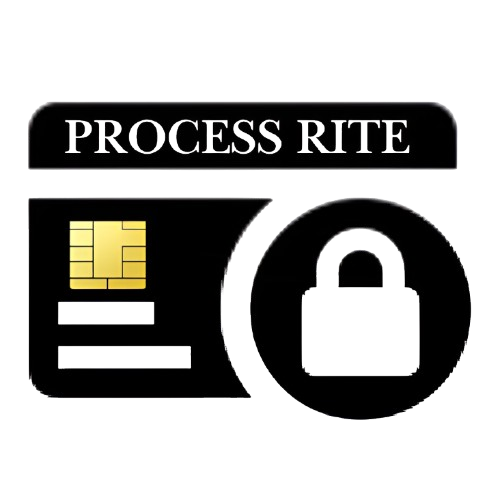Payment processing services are vital for any business that accepts payments online or in person. They enable merchants to securely and efficiently process payments, providing an essential service that facilitates seamless transactions between customers and businesses. As businesses increasingly move to digital platforms, understanding how payment processing services work and selecting the right provider becomes crucial to maintaining secure and efficient payment systems. What Are Payment Processing Services? Payment processing services are systems that enable businesses to accept payments from customers, usually via credit and debit cards, digital wallets, or other forms of electronic payments. These services handle the entire transaction process, including authorization, verification, fund transfers, and security measures to ensure that the payment is processed smoothly and securely. At the heart of these services are payment gateways and payment processors, which work together to facilitate the transaction process. Payment gateways securely transmit payment information from customers to payment processors, while payment processors are responsible for verifying, authorizing, and settling the payment. How Payment Processing Services Work The process of payment processing typically involves several steps from the moment a customer initiates a purchase until the funds are deposited into the merchant’s account. Here’s a step-by-step overview of how payment processing services work: Types of Payment Processing Services There are several types of payment processing services, each suited to different business needs. These include traditional processors, online payment gateways, and mobile payment systems. Here’s a breakdown of the main types: 1. Traditional Payment Processors Traditional payment processors, like Visa, MasterCard, and American Express, are the backbone of the credit card industry. These processors facilitate payments through physical terminals at brick-and-mortar stores or online payments through integrated systems. While these processors have an established reputation, they often come with higher fees and more complex contractual agreements. 2. Payment Service Providers (PSPs) Payment Service Providers (PSPs) such as PayPal, Stripe, and Square, offer an all-in-one solution that combines both the payment gateway and payment processing functions. PSPs typically charge a fixed percentage of each transaction, making them popular with small businesses due to their simplicity and ease of use. PSPs can handle both online and in-person payments, making them flexible for various types of businesses. 3. Online Payment Gateways An online payment gateway is an essential tool for ecommerce businesses. It securely transmits payment information from the customer’s bank to the payment processor. Some payment gateways, like Authorize.Net and Braintree, also provide integrated fraud protection and are ideal for merchants running online stores. 4. Mobile Payment Systems Mobile payment systems, such as Apple Pay, Google Pay, and Samsung Pay, allow merchants to accept payments through smartphones and mobile devices. This system is especially beneficial for businesses with a mobile customer base or those operating in locations like markets or events. Mobile payment solutions are also convenient for customers, offering faster and more secure checkout experiences. 5. Point-of-Sale (POS) Systems POS systems are primarily used by brick-and-mortar retailers to accept payments in person. These systems integrate both hardware (like card readers and receipt printers) and software to process payments. Modern POS systems, such as Square and Clover, allow businesses to accept credit card payments, manage inventory, track sales, and generate reports, all in one platform. Key Benefits of Payment Processing Services Using payment processing services offers numerous benefits for businesses, ranging from efficiency and security to customer satisfaction. Some of the key advantages include: 1. Security Payment processors utilize high-level encryption protocols to secure payment data. They also adhere to PCI DSS (Payment Card Industry Data Security Standard) guidelines, ensuring that sensitive cardholder information is protected from fraud and unauthorized access. 2. Speed and Efficiency Payment processing services speed up the checkout process, reducing wait times and increasing efficiency. With real-time transaction approval, businesses can quickly confirm payments and proceed with order fulfillment, improving the overall customer experience. 3. Access to a Global Market With payment processing services, businesses can accept payments from customers worldwide. This is particularly valuable for ecommerce businesses that want to expand their reach beyond local or regional markets. Many payment processors offer multi-currency support, enabling merchants to accept payments in different currencies and adjust for international exchange rates. 4. Increased Convenience for Customers Customers expect a seamless and convenient payment experience. By offering multiple payment methods, including credit/debit cards, digital wallets, and mobile payment systems, businesses can cater to diverse customer preferences, which can lead to higher conversion rates and increased customer loyalty. 5. Recurring Billing and Subscriptions Payment processing services are essential for businesses with recurring billing models, such as subscription-based businesses. Automated recurring billing allows merchants to easily charge customers on a regular basis, reducing administrative workload and ensuring consistent revenue streams. How to Choose the Right Payment Processing Service Selecting the right payment processing service is critical for ensuring smooth transactions and minimizing costs. When choosing a provider, consider the following factors: 1. Transaction Fees Most payment processors charge a fee per transaction, typically ranging from 1.5% to 3.5%. It’s important to evaluate the pricing structure of each provider and assess how it will affect your margins. Look for transparent pricing with no hidden fees. 2. Security Features Given the increasing risk of online fraud, security should be a top priority when choosing a payment processing service. Look for services that offer robust encryption, fraud protection, and compliance with PCI DSS standards. 3. Ease of Integration Choose a payment processor that easily integrates with your existing ecommerce platform, website, or point-of-sale system. Some providers offer plugins or APIs that simplify integration, while others may require more technical expertise. 4. Customer Support Reliable customer support is essential, especially if you encounter any technical issues or payment disputes. Choose a payment processor that offers responsive customer support, including 24/7 assistance, phone, email, or live chat options. 5. Payment Method Flexibility Consider offering multiple payment methods to accommodate your customers’ preferences. A payment processing service should allow you to accept various forms of payment, including credit/debit cards, digital wallets, and alternative payment methods like bank transfers

